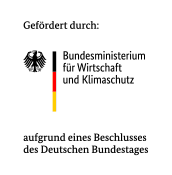Background
The @CITY research initiative brings together 15 partners from the automotive industry, supply industry, software development and universities. Subdivided into the two projects @CITY and @CITY-AF, concepts, technologies and prototypical applications are developed, enabling automated driving in complex urban areas. The aim is to make the city traffic of the future as safe, comfortable and efficient as possible for all road users. The research initiative is supported by the Federal Ministry for Economic Affairs and Climate Action (BMWK) with a funding volume of around 20 million euros.
The Institute of Ergonomics is represented in the project @CITY-AF and will conduct research in the subproject “Human-Vehicle-Interaction”. This subproject deals with the interaction between the three protagonists: vehicle users, automated vehicles and other road users. A research focus is the execution of non-driving activities in automated driving.
Further information about the project can be found at https://www.atcity-online.de/
Aims
From the point of view of the possible NDA, it is desirable that the interior and infotainment systems can be developed specifically for the needs of future scenarios. One goal is the identification of relevant NDAs. This offers great potential for the improvement of existing and future infotainment systems. An additional goal is the evaluation of NDA with regard to the human resource use of the vehicle user and the resulting recommendations for the task design.
Method
Survey through online questionnaires
Driving simulator (complete vehicle mock-up and self-developed automation controller with driving functions according to SAE L3)
Stimulus-response test (DIN 17488)
Results
The survey (N = 164) identified the preferred NDAs for highly automated travel. For the subsequent evaluation of the human resources, five NDAs identified as relevant in advance were further examined by means of a stimulus-response test.








